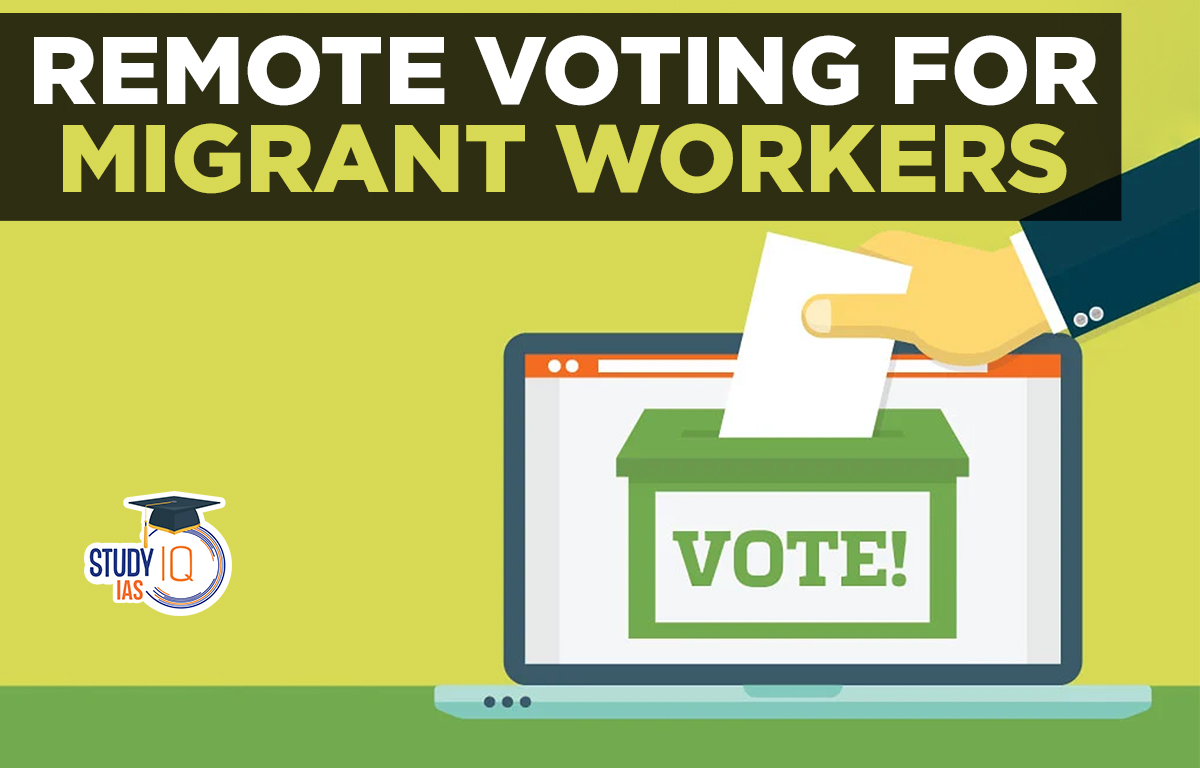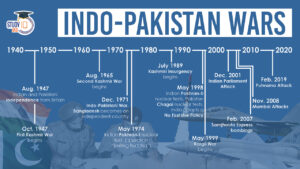Table of Contents
Context: The Election Commission of India is ready to launch pilot remote voting for domestic migrants, so they don’t have to travel back to their home states to vote.
More on Remote Voting for Migrant Workers
- With this move, the EC hopes that it will be able to boost voter turnout and strengthen India’s democratic process.
- EC’s solution: EC has developed a prototype for a Multi-Constituency Remote Electronic Voting Machine (RVM) that can handle multiple constituencies from a single remote polling booth.
- In order to boost confidence of political parties in this model, EC has invited all recognised eight national and 57 state political parties to demonstrate the functioning of the RVM and has asked for their written views by January 31

Migration-based Disenfranchisement
- Domestic migration is a major contributor for registered voters not ending up voting in the elections. Migration can be driven by a variety of different reasons from marriage to natural disaster to employment.
- There are about 45.36 crore migrants in India (both intra and inter state) – amounting to approximately 37 per cent of the country’s population (2011 Census).
- The plan of giving voting opportunities for migrants is directly in line with EC’s goal of “No voter left behind”.
- EC’s definition of remote voters: “Voters who are absent from their home locations on the day of polling, even if they wish to vote, are unable to travel to vote due to various reasons.”
The Idea of Remote EVMs
- To understand the issue of migrant voters unable to vote, EC had formed a “Committee of Officers on Domestic Migrants”, which submitted a report in late 2016 after considering various possible solutions such as internet voting, proxy voting, early voting and postal ballots for migrant workers.
- All the other potential ideas were rejected due to reasons such as the lack of secrecy of the vote, the lack of sanctity of one person one vote principle, issues of accessibility for unlettered voters, etc.
- Remote Voting Machine (RVM): The solution to this problem was RVM, which relies on the creation of a robust electoral roll and identification mechanisms (to stop duplicate voting), and allow voters to vote remotely, in a safe and controlled environment.
- The RVM was developed with the help of Bharat Electronics Limited (BEL) and the Electronics Corporation of India Limited (ECIL).
Working of Remote RVMs
- The RVMs are “stand alone, non-networked systems,” designed to provide the voter the same experience as currently used EVMs. They will be set up in remote locations outside the state under similar conditions as current polling booths.
- Features: The unique feature of RVMs is that a single Remote Ballot Unit (RBU) will be able to cater to multiple constituencies (as many as 72) by utilising a “dynamic ballot display board” instead of the usual printed paper ballot sheet on EVMs.
- The Ballot Unit Overlay Display (BUOD) will show the candidates based on the constituency number read on the voter’s Constituency card. A barcode scanning system will be used to read these cards.
- The voting process: After verifying a voter’s identity, their constituency card will be read with a public display showing the constituency details and candidates.
- This information will be displayed privately, on the BUOD in the RVM’s RBU. The voter will cast their vote and each vote will be stored constituency-wise in the control unit of the voting machine.
- The VVPAT system is expected to work along the same lines with the new technology.
- This information will be displayed privately, on the BUOD in the RVM’s RBU. The voter will cast their vote and each vote will be stored constituency-wise in the control unit of the voting machine.
Issues that Needs to be Addressed
- Definition of migrant: Migrants are not a uniform and defined class, with varying identities, locations and situations.
- The challenge for the EC is to create an inclusive definition of migrants which at the same time does not allow the system to be misused.
- The EC will have to decide if all migrant voters are eligible for remote voting. It will also have to determine the duration that a migrant has to stay outside home to qualify.
- Sanctity of electoral process: The Use of RVM has the potential to raise further questions on the sanctity of the electoral process, which is already under scrutiny for technical glitches in EVMs.
- Further addition of technological components in the voting machine are bound to raise further questions.
- Removes Level playing field: Remote voting can theoretically give an added advantage to bigger parties and richer candidates who can campaign across the constituency and beyond.
- This will violate the idea of level playing field in the electoral process.


 Article 142 of Indian Constitution, Sign...
Article 142 of Indian Constitution, Sign...
 Pakistan-Occupied Kashmir (PoK): History...
Pakistan-Occupied Kashmir (PoK): History...
 List of Indo-Pakistan Wars and Conflicts...
List of Indo-Pakistan Wars and Conflicts...





















